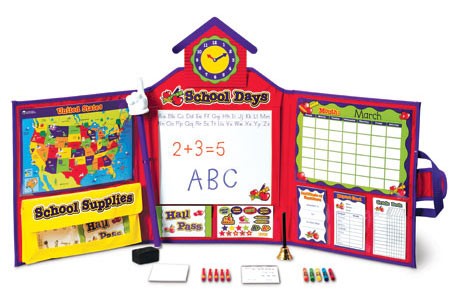Stock Market for Kids Learning Resources
Post on: 23 Апрель, 2015 No Comment

The stock market is such a major part of the economy that everyone should grow up with at least some basic knowledge of what it is and how it operates. After all, even if you don’t trade yourself, it is very likely that your retirement and savings are tied into the market. Plus, teaching children about the stock market is an informative and captivating activity that can open up a new world for children and give them a better perspective of how the world actually works, using mathematics, logic, and analytical skills.
To assist parents and teachers in teaching the stock market to kids of (virtually) all ages, I’ve compiled resources that are age-appropriate for instruction. I’ll also give you an idea of how you can frame the market and demonstrate to your kids what it is and what it does in way they can understand.
Ages 8-11: Teaching the Basics
While you can begin teaching the basics earlier, this age range is a good opportunity to begin with the idea of an investment – what it is and what it means.
Explain to children that an investment is a way you can take the money you have and earn more money. If they know how to multiply with percentages, you can introduce the idea of interest. Give them a certain amount of money, say, $10. Explain to them that interest is paid to you when someone borrows your money and uses it. So, 1% interest would mean you multiply $10 by 1%, which is the interest rate. So, in this case, they would receive one one-hundreth of $10, or 10 cents, and have a total of $10.10.
This gives them an idea of how money can grow in value using percentages. Now, you can explain how a bank will pay them to use the money that they place in a savings account. This is the first and easiest way most children get started with saving and investing money. Use this savings calculator to give them an idea of how much they can gain through savings.
This same principle can then be used to explain how a business raises money by giving investors a piece of the company. Use a lemonade stand – something kids that age can identify with. If someone wants to start a lemonade stand, but they don’t have the money to buy the lemons, sugar, cups, and equipment, what should they do? They can borrow money from their parents or friends and offer to give them a quarter for every dollar of profit that the lemonade stand makes.
Ages 12-15: Learning About the Market
At this stage, you can begin introducing the stock market. Start by explaining the idea of shares . or “pieces” of the company that a person can own if they invest in the company. Explain how these shares go up and down in value based on how well the company is performing. If the company makes more money this year than they did last year, more people will want to buy shares. The value of that share will increase. This lesson plan is a great way to introduce the laws of supply and demand.
After they grasp supply and demand, and understand how the value of shares can go up or down depending on what the company does and what other investors think of the company, explain to them what the stock market is and what it means. You can also introduce them to Wall Street basics and cover trading in the world’s largest market. Additionally, teach them about stock market price history with this activity that helps them track a single stock and its value over time using historical data. Furthermore, use this lesson on the Stock Market Crash of 1929 to
Once they reach middle school, and have a good idea of stock market basics, they can begin trying to apply what they’ve learned by playing a basic stock market game. This Play the Market lesson plan from PBS is a great resource for giving children at this age level a chance to get into the market and try their hand at stocks.
Ump’s Fwat is a dated but still handy way to explain how companies begin, grow in value, and generate income for their owners and their investors.
Ages 16-18: Learning About Trading
At this age, teenagers have likely taken courses in advanced math and economics. The goal here is to give them broad exposure to the world of actually trading stocks and handling investments for short-term and long-term growth.
The best, overall way to do this is to give them access to a full-fledged, year-long stock market game. The Stock Market Game. hosted by the SIFMA Foundation, is one of the best programs available today. It is the only simulation that has an endorsement from the New York Stock Exchange and gives students an in-depth look at the fundamentals of buying and selling stocks on the market (with an emphasis on stocks as a long-term way to gain wealth).
The National Stock Market Simulation is another option that provides a good range of information and educational material for a host of topics related to stock trading.
At the same time, they can play a fun game like “Can You Be the Next Market Guru?”, which tests their ability to time the market throughout history.
Students may also want to learn more about advanced stock market concepts, like price-to-earnings ratios, bid and ask prices, and the mechanics of trading. The New York Stock Exchange has a solid lesson plan here for high school students that focuses on trading.














